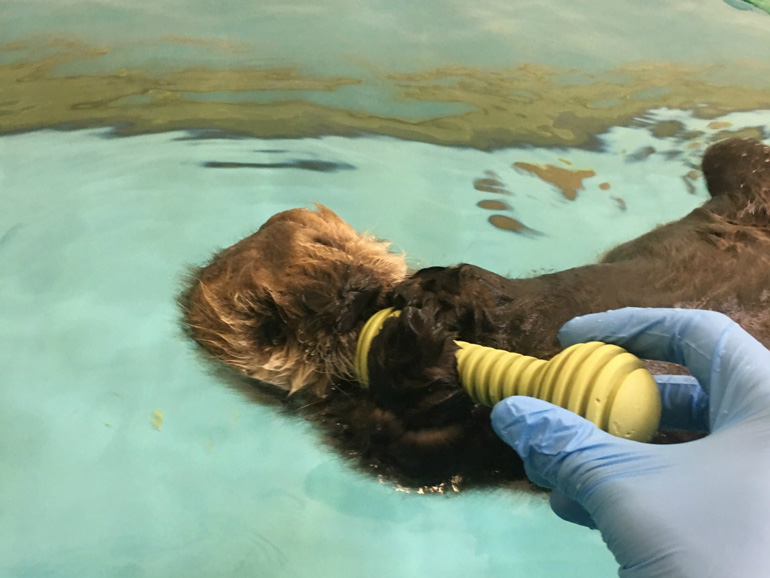Taking Care of a Sea Otter Pup

In Focus
Tuesday, August 23, 2016
Senior Mammologist Josh Hestermann recently traveled to the Monterey Bay Aquarium to participate in its Sea Otter Program.
They had recently rescued a stranded two-week-old female sea otter, and she was in the early phases of being reared for release back to the wild. This provided Aquarium of the Pacific staff with the opportunity to be trained on infant otter care. Here is a brief account of Josh’s experience working with a sea otter pup.
Just like any baby, a sea otter pup needs ‘round-the-clock care. Are there any new parents reading this? If so, you might be familiar with the following schedule.

Each morning, I would arrive at the Sea Otter Program office and go over any changes from the day before. The otter was housed in the Intensive Care Unit (ICU), a behind-the-scenes area that was built specifically for the rehabilitation of sea otter pups. I would spend some time observing the pup on the monitor until it was time for water play or for her to wake up, be groomed, or fed.

During playtime, which sometimes served the purpose of waking her up, I would guide the pup into the pool where she would practice swimming and holding objects, such as a toy clam shell. Sometimes she would drop the toy into the water, watch it sink to the floor, and then attempt to dive to retrieve it. Since sea otter pups have extremely dense fur, it makes them very buoyant and practically unsinkable.
Once playtime was over, we would spend twenty minutes on grooming. Their dense fur also makes them very difficult to dry. It would take three (or more) towels to dry her, and then I would spend a significant amount of time brushing out her fur.

The pup was usually tuckered out after playtime and grooming, and after a bit of sleep it was the perfect time to introduce her to the bottle and give her a feeding. Once she finished eating, I would “tuck her in” by wrapping her in faux kelp so that she could drift off to sleep.
Since this sea otter pup has been a stellar student and picked up on a lot of behaviors early on, the folks at Monterey Bay Aquarium think she is on track to be released back into the wild. However, this little female still has several months of learning and care ahead of her before she will have the skills necessary to survive in the wild.

Overall, I learned that taking care of a baby otter is similar to taking care of any baby animal. You have to make sure they get the proper amount of food, sleep, and playtime. While it was sometimes hard work to monitor her every move, make sure she was meeting her milestones, and, let’s be honest here, clean up her poo, I feel lucky to have had such a special experience.
Moreover, I gained invaluable animal care knowledge that I can use while training our own family of sea otters at the Aquarium of the Pacific. Also, if a new baby sea otter makes its way here, I now know how to take care of it.
Partnerships with other institutions that allow access to special training like this is just one of the reasons that the animal care programs here at the Aquarium of the Pacific are top notch. We’d like to extend a big thank you to Andy Johnson, Karl Mayer, Michelle Staedler, and the entire Sea Otter Program team up at Monterey Bay Aquarium for providing Josh with this special opportunity.

